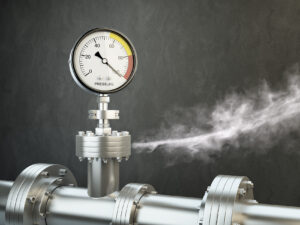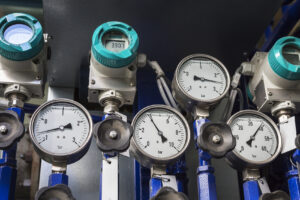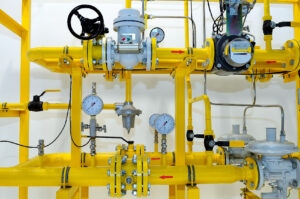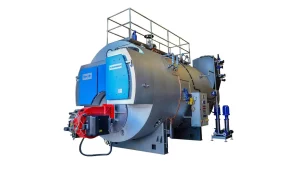Dual-tube dual-pointer pressure gauges are specialized instruments designed to simultaneously monitor and display two separate pressure readings. These gauges are widely used in applications requiring real-time comparison of two pressure sources, enhancing operational efficiency and safety in various industrial settings.
What Is a Dual-Tube Dual-Pointer Pressure Gauge?
A dual-tube dual-pointer pressure gauge integrates two independent pressure measurement systems within a single housing. Each system consists of its own Bourdon tube, pointer, and scale, allowing it to measure and display two distinct pressure values on the same dial. This configuration eliminates the need for multiple gauges and simplifies monitoring.
Key Features of Dual-Tube Dual-Pointer Pressure Gauges
- Two Independent Systems:
- Equipped with two Bourdon tubes for separate pressure measurements.
- Dual pointers operate independently, offering precise readings for both pressure sources.
- Shared Dial Design:
- A single dial accommodates dual scales for clear and compact pressure display.
- Color-coded pointers or differentiated scales enhance readability.
- Robust Construction:
- Typically made from durable materials like stainless steel to withstand harsh environments.
- Resistant to vibration and shock, ensuring stable performance.
- Wide Pressure Ranges:
- Suitable for applications with varying pressure requirements, from low to high pressures.
- Customizable Configurations:
- Options for specific scale ranges, connection types, and mounting styles to fit diverse applications.
Applications of Dual-Tube Dual-Pointer Pressure Gauges
- Industrial Processes:
- Monitoring input and output pressures in filtration systems.
- Ensuring proper pressure balance in hydraulic or pneumatic systems.
- Oil and Gas Industry:
- Comparing wellhead and pipeline pressures to prevent overpressure scenarios.
- Refrigeration and HVAC Systems:
- Simultaneously tracking high-side and low-side pressures for system diagnostics and maintenance.
- Laboratory and Testing Facilities:
- Precise monitoring of pressures in experimental setups requiring dual pressure sources.
Advantages of Using Dual-Tube Dual-Pointer Pressure Gauges
- Space Efficiency: Combines two gauges into one unit, saving panel or equipment space.
- Improved Comparisons: Provides real-time comparison of two pressure values on a single display.
- Cost-Effective: Reduces the need for multiple instruments and associated maintenance costs.
- Enhanced Safety: Enables quick identification of pressure discrepancies, helping to avoid system failures.
Selecting the Right Dual-Tube Dual-Pointer Pressure Gauge
When choosing a dual-tube dual-pointer pressure gauge, consider the following:
- Pressure Ranges: Ensure the gauge can accommodate the maximum pressures of both sources.
- Dial Size: Select a size that offers optimal readability for your application.
- Connection Type: Verify compatibility with your system’s fittings (e.g., NPT, BSP).
- Environmental Resistance: Choose materials and designs suitable for the operating environment, such as corrosion-resistant coatings for outdoor use.
Conclusion
Dual-tube dual-pointer pressure gauges are invaluable tools for industries requiring precise and simultaneous pressure monitoring. By consolidating two measurement systems into a single device, these gauges simplify operations, enhance safety, and reduce costs. Their robust design and versatile applications make them a reliable choice for professionals across various fields.



